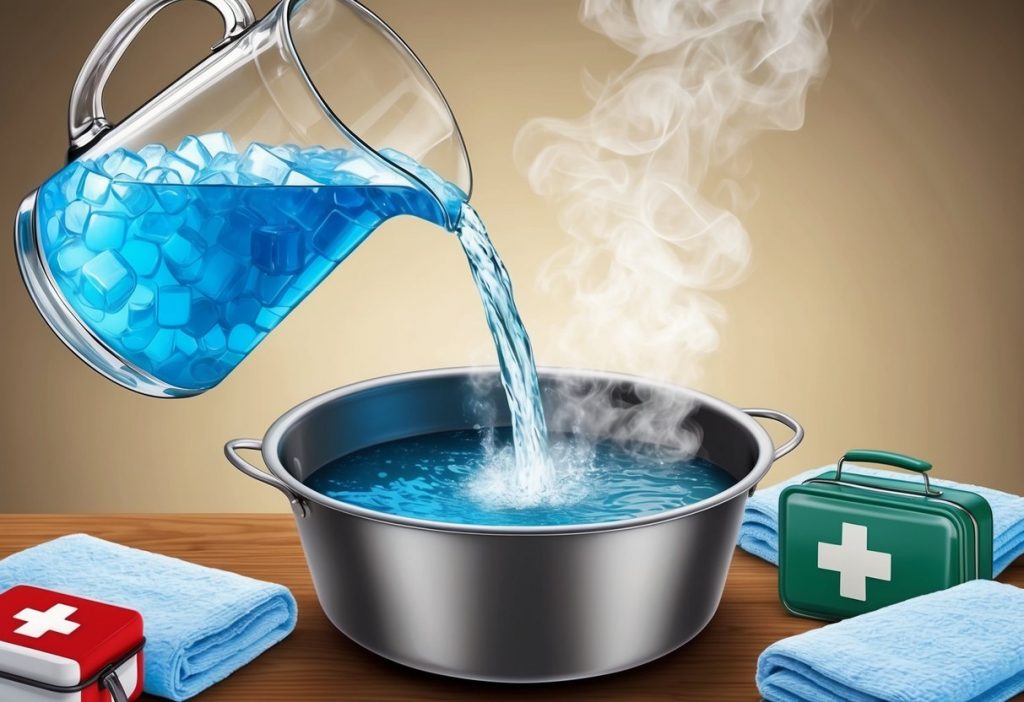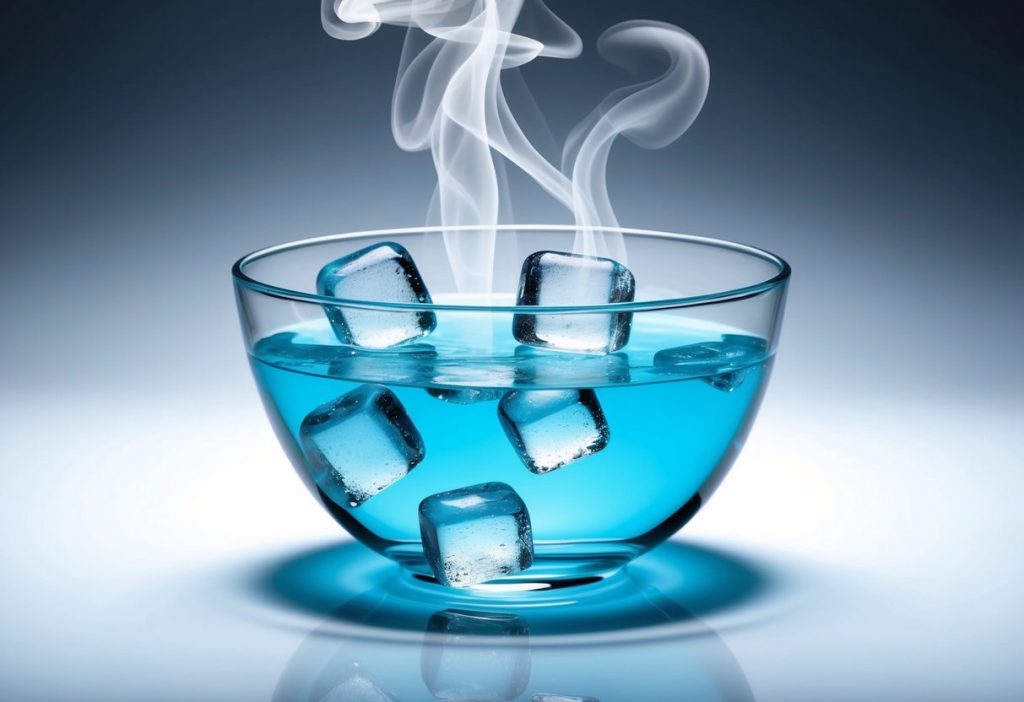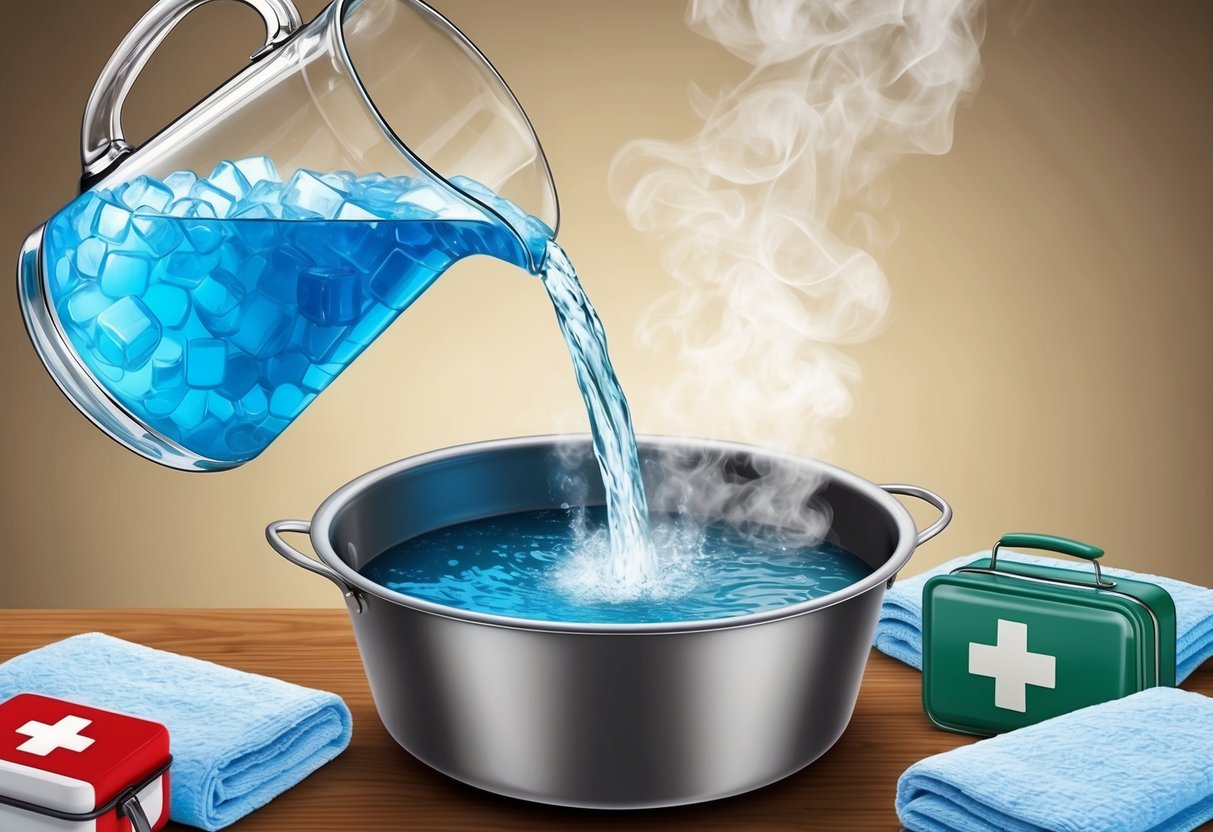
Ice baths, also known as cold water immersions, have gained popularity for their potential health benefits. They are often used to help with muscle recovery and soreness. Ice baths can effectively reduce inflammation and pain after exercise, making them a popular choice among athletes and fitness enthusiasts.
Additionally, ice baths might also have mental health benefits. By taking the plunge, individuals may experience a boost in energy and improvements in mood. The cold shock can help increase alertness and focus, possibly aiding in stress management.
Not everyone should jump into an ice bath without caution. It’s important to follow safe practices, such as limiting time in the water and ensuring the correct temperature. Those with certain health conditions should consult a healthcare professional before trying it. By understanding the benefits and taking proper precautions, many can harness the potential advantages of ice baths.
Understanding Ice Baths
Ice baths are popular for their potential benefits in aiding muscle recovery, reducing stress, and improving circulation. They typically involve immersing the body in cold water to help alleviate soreness and inflammation.
What is an Ice Bath?
An ice bath is a method of cold therapy where a person immerses themselves in cold water, typically around 50-60 degrees Fahrenheit (10-15 degrees Celsius). This form of therapy is used by athletes to ease sore muscles and reduce inflammation after intense workouts.
The cold temperature helps constrict blood vessels and decreases metabolic activity, which reduces swelling and tissue breakdown. The process also numbs nerve endings, which may lessen pain immediately following exercise. This makes ice baths a practical recovery method for those who are looking to speed up muscle healing and improve athletic performance.
Components of an Ice Bath
The key components of an ice bath include cold water and the container used for the bath. Usually, a large tub or a specially designed ice bath tub is preferred. An ice bath tub for adults should be spacious enough to submerge the body comfortably.
Ice is added to the water to achieve the desired temperature. The best tubs for ice baths can be portable, allowing easy setup and storage. A portable ice tub is a great option for individuals without much space. Ensuring that the water level can cover the intended muscle groups is crucial for effective therapy.
Setting Up an Ice Bath at Home
To set up an ice bath at home, one needs a sturdy bathtub, such as a standard home tub or a best at home ice bath tub specifically designed for this purpose. Start by filling the tub with cold water. Gradually add ice to reach the target temperature.
It’s important to have a thermometer to monitor the water temperature. Submerge the body for about 10-15 minutes. Make sure to keep the upper body above water if complete immersion is not suitable. Proper preparation, such as wearing appropriate clothing or setting a timer, can enhance comfort and safety during the session.
Scientific Insight into Ice Bath Benefits
Ice baths, also known as cold water immersion, have gained attention for their potential health benefits. These include aiding recovery, reducing stress, and improving mental resilience.
Physiological Effects of Cold Water
Cold water exposure triggers several changes in the body. Immersion in ice baths causes blood vessels to constrict, reducing blood flow and potentially decreasing inflammation and swelling. This process may help alleviate muscle soreness after intense workouts. The cold also stimulates the production of brown adipose tissue, which can burn calories and improve metabolism. During exposure to cold, the body releases adrenaline and endorphins, which can enhance mood and energy levels. The sensation of cold also slows nerve transmission, which may help with pain management.
Cold Water Immersion Benefits
The benefits of cold water immersion can extend beyond just physical recovery. Cold-water plunging is thought to support mental health by reducing symptoms of anxiety and depression due to the release of mood-enhancing hormones. Regular ice baths can boost the immune system, making it more effective at fighting off illnesses. They may also improve circulation and skin health. Athletes often use ice baths to speed recovery time, allowing them to train more efficiently. Some studies suggest ice baths might even help regulate cholesterol and insulin levels, which can benefit overall health.
Weight Loss and Metabolism
Ice baths are gaining attention for their potential role in weight loss and metabolism improvement. Cold immersion may aid in burning calories and activating brown fat, which can contribute to fat loss.
Can Ice Baths Boost Weight Loss?
Ice baths might assist in weight loss by engaging the body’s natural processes. When exposed to cold temperatures, the body has to work harder to maintain its core temperature. This increased effort can lead to the burning of more calories.
Brown fat, which is more metabolically active, can be activated through cold exposure. When this type of fat is activated, it burns energy to generate heat. This process helps in burning body fat.
Some studies suggest that combining regular ice baths with a healthy lifestyle can support weight loss efforts. Despite these benefits, ice baths should not replace traditional weight loss methods like diet and exercise. They can provide an added boost alongside other weight loss strategies.
Cold Water and Calorie Burning
Cold water exposure can lead to an increase in calorie burning due to the body’s response to cold. When someone takes an ice bath, shivering is a common response. This involuntary action requires energy, which means more calories are burned during the process.
Additionally, as the body tries to warm up, it increases its metabolic rate. This higher rate of metabolism contributes to burning more calories. While cold exposure, such as taking a cold plunge, may foster calorie burning, it is only a part of a comprehensive approach to weight management.
Cold baths can serve as a complement to traditional methods and should be used carefully to avoid potential risks such as hypothermia.
Exercise Recovery
Ice water baths have been used to ease muscle soreness and reduce inflammation, particularly after intense workouts. Both cold and warm showers offer unique benefits to help muscle recovery and improve circulation.
Benefits After Workouts
Ice baths can be a powerful tool for athletes after exercising. They help reduce symptoms of delayed onset muscle soreness (DOMS), like pain and stiffness, which usually appear a day or two after working out. Ice baths work by constricting blood vessels, which can decrease swelling and tissue breakdown.
For those engaging in high-intensity sports, this method can aid muscle recovery and return them to training sooner. Some research even suggests that cold water immersion may bring about metabolic benefits, possibly affecting fat tissue.
Hot vs. Cold Showers Post-Exercise
Hot showers are known to improve blood circulation. This can facilitate healing by relaxing muscles and helping them recover from strain. Heat therapy is often suggested to help reduce stiffness and enhance relaxation.
Conversely, cold showers or ice baths reduce inflammation and numb soreness. Athletes often choose between them based on their specific recovery needs. Warm showers might be better for relaxation, while cold showers or baths can offer immediate muscle relief following high-intensity activities. Each method has its own unique benefits, tailored to different aspects of exercise recovery.
Studies show that cold-water plunging might also improve mood and cognitive function, making it a well-rounded choice for many post-exercise routines.
Potential Risks and Precautions
Ice baths can offer benefits, but they come with potential risks. It’s important to understand these risks to prevent harm. Proper precautions are essential for safe use. This section covers whether ice baths are dangerous and provides guidelines for cold immersion.
Are Ice Baths Dangerous?
Ice baths are generally safe for healthy individuals but pose risks if not done correctly. Cold water can cause hypothermia, especially if exposure is prolonged. Hypothermia happens when the body loses heat faster than it can produce it, leading to dangerously low body temperatures.
Another risk is a cold shock. This is an involuntary gasp and rapid breathing response when first entering icy water. It can be dangerous, especially if it leads to panic or increased heart rate. For people with cardiovascular issues, ice baths may increase heart strain. It may be wise to consult a healthcare provider before trying ice baths.
Safe Practices for Cold Immersion
To minimize risks, it is important to follow safe practices. Limit immersion time to 10-15 minutes. Monitor how the body feels, and exit the bath if shivering becomes intense or if dizziness occurs. Slowly adjust to the temperature instead of abruptly jumping into the icy water.
Using a thermometer to maintain a safe water temperature, typically around 50-59°F (10-15°C), can help prevent hypothermia. People with health concerns like heart conditions should seek medical advice before starting an ice bath routine. Always ensure someone is nearby during the bath to assist if needed, reducing potential risks.
Comparative Perspectives
When considering the benefits of ice baths compared to cold showers, it’s important to recognize the unique advantages each method offers. Both can aid in muscle recovery and stress reduction, but they differ in intensity and mechanism.
Ice Bath vs. Cold Shower Benefits
Ice baths and cold showers both provide cold therapy which can be beneficial. An ice bath involves submerging the body in cold water, usually around 60 degrees Fahrenheit or colder. This method is known for reducing muscle soreness and inflammation in athletes due to vasoconstriction. It can also assist in boosting circulation once the body returns to normal temperature.
Cold showers offer a more accessible and less intense version of cold therapy. They can improve alertness by stimulating the nervous system and are linked to benefits like reduced muscle tension and improved skin health. They may also help in decreasing symptoms of depression through endorphin release. For those looking for a quicker and less extreme method, cold showers might be practical due to their convenience and ease of use at home.
Frequently Asked Questions

Ice baths are popular for various reasons, yet they come with both advantages and disadvantages. Understanding the risks, effects on weight, and skin health can help users make informed decisions.
What are the potential risks associated with ice baths?
Ice baths may carry risks such as hypothermia and frostbite if not done correctly. It is important to ensure the water temperature is safe, typically between 50°F and 59°F, as noted in Ice Bath 101.
How can ice baths contribute to weight management?
Cold exposure from ice baths can slightly boost metabolism as the body works harder to maintain its core temperature. This increase in energy expenditure might support weight management as part of a healthy lifestyle.
What are the drawbacks of utilizing ice baths for recovery?
While ice baths can reduce muscle soreness, they might also limit muscle adaptation and growth. Athletes should be cautious about frequent use because it might interfere with long-term training benefits.
What benefits can ice baths have on skin health?
Ice baths can help improve circulation, which in turn can promote healthier skin by delivering nutrients and oxygen more efficiently. This improved blood flow might contribute to a fresher appearance.
How long is recommended to stay in an ice bath for optimal benefits?
Experts generally recommend staying in an ice bath for about 5 to 10 minutes. This duration allows the body to receive benefits like reduced inflammation without significant discomfort or risk.
What steps should be taken after completing an ice bath?
After an ice bath, it is crucial to warm up the body gradually. This can be done by drying off, wearing warm clothes, and doing light movement to restore normal body temperature safely.
